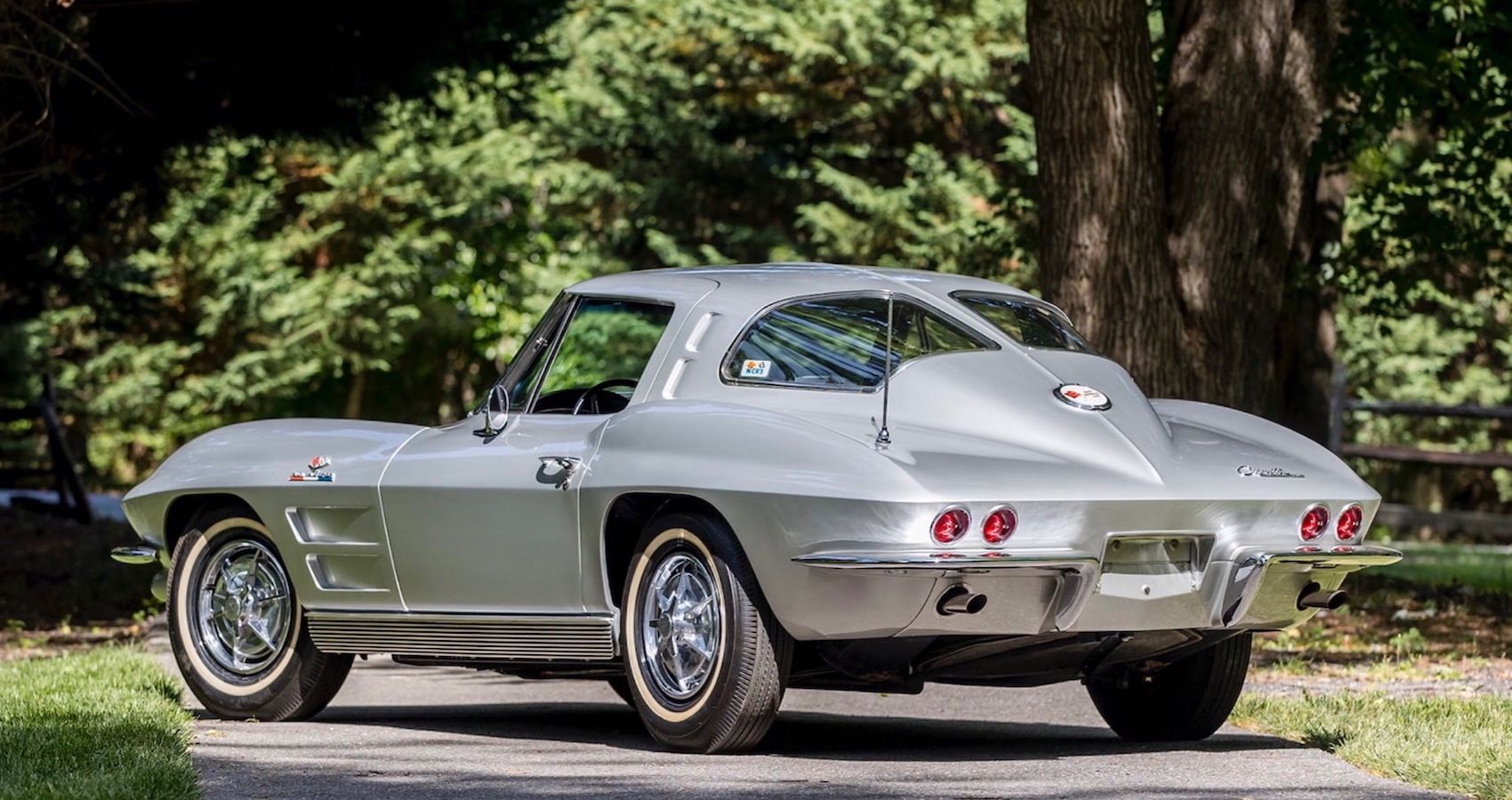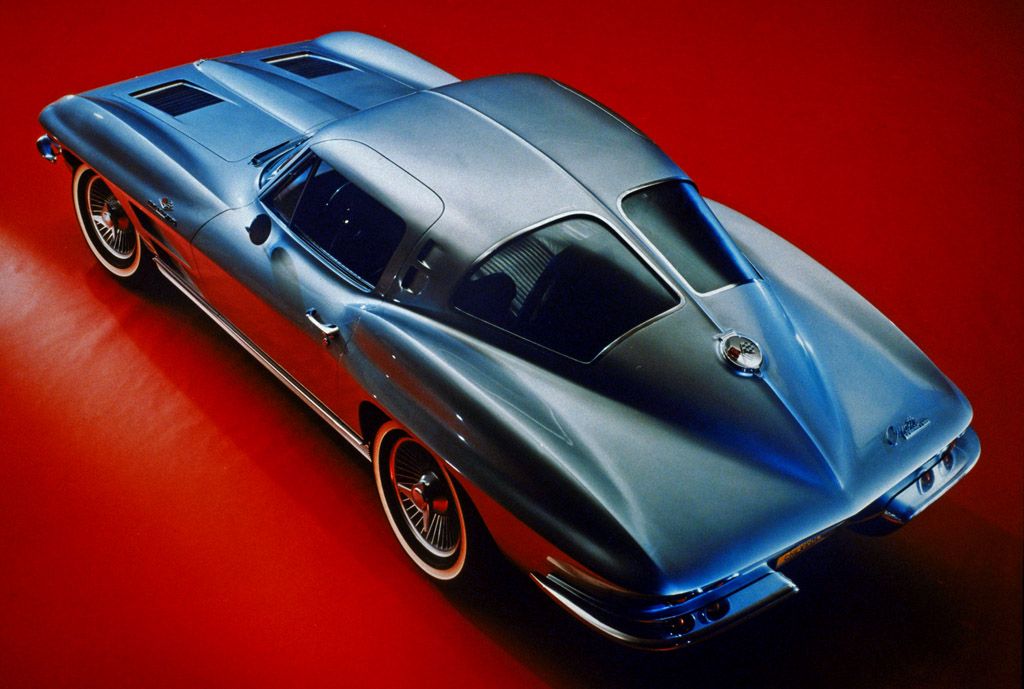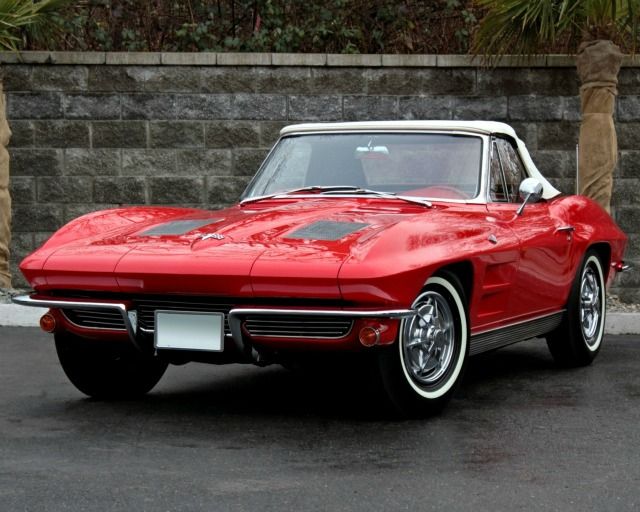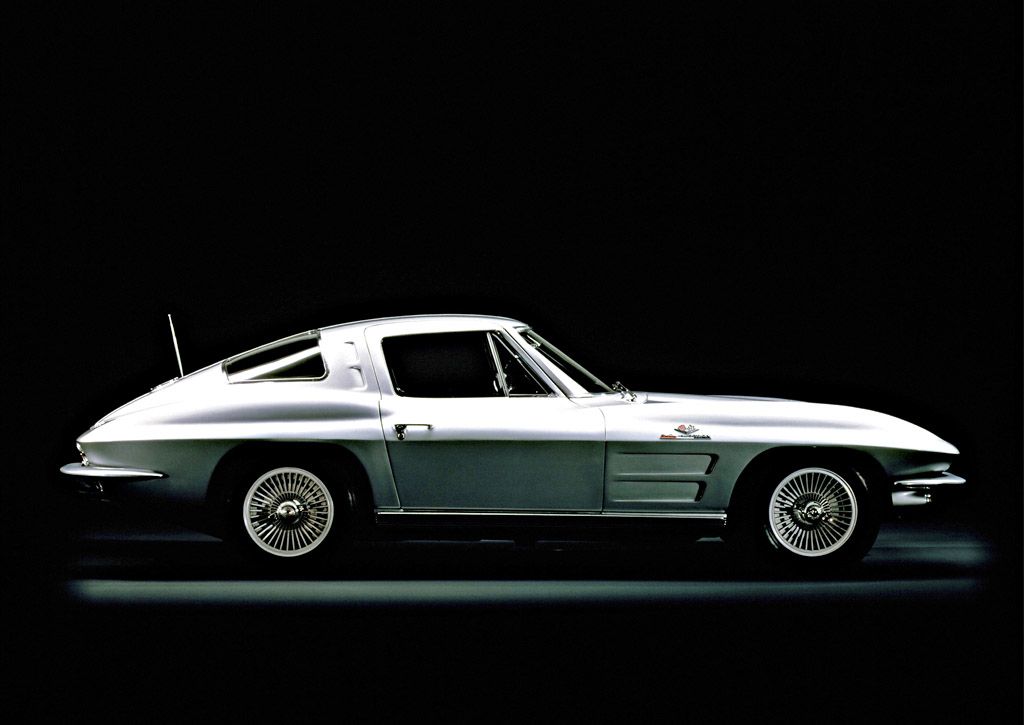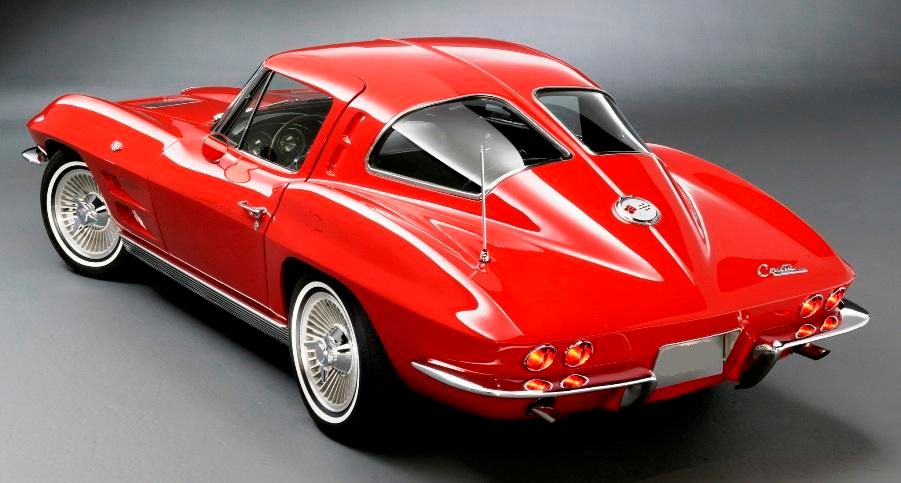Most times, the 1963 Chevrolet Corvette (split-window) Stingray is the first, if not the only car that comes to mind when people mention ‘split-window’ cars. That just highlights the incredible significance of the 1963 Stingray, as it's literally stolen the ‘split-window’ show from other '40s to '60s classic cars sporting a similar design, which includes the split-window 1952 – ’53 VW ‘Zwitter’ Beetle, the 1937 Bugatti Type 57SC Atlantic Coupe, and the 1948 – 1952 Porsche 356.
Notably, the split rear windshield is not the only reason '63 Stingray is a collector’s dream car today. In fact, the customers weren’t as thrilled with the styling back in the day as we are today. However, the Chevrolet Corvette Stingray has always been a well-loved and respected nameplate since the 1959 Stingray Racer concept that became the primary inspiration for the development of the second-generation (C2) Corvette Stingray.
It packed a satisfying array of advanced vehicular technologies eliciting applause from test drivers. Though a bonafide sports car, Stingray was a de facto grand touring car with the mettle to go toe-to-toe with the best of Europe in the GT class. The 1963 model year ushered the Corvette into its second generation, and it was just as special and attention-grabbing as its 1953 launch.
A Brief History Of The Second Generation Chevrolet Corvette
The 1963 Corvette Stingray kicked off the second generation (C2) of the Corvette sports car models manufactured by the Chevrolet division of General Motors. The C2 would be produced through to the 1967 model year. The development of this car has roots in two separate GM projects, namely, the Q-Corvette and the Bill Mitchell racing Sting Ray.
Renowned American automobile designer Bill Mitchell was blown away by the strong horizontal styling of cars like the Abarth 750 Streamliner and Alfa Romeo Disco Volante paraded at the 1957 Turin Auto Show. The Q-Corvette project on the other hand referred to the Chevy GM Ed Cole's initiative to build cars whose defining features are a front-mounted engine and a rear-mounted transaxle. Mitchell showed pictures of the cars he'd seen at the Turin Auto Show to the Q-Project design team.
However, the project would later be scrapped, following the exit of GM Chairman Harlow Curtice. Still, the idea of a smaller, but more advanced coupe-only Corvette did not die with the Q-Project. By that time, GM’s engineers were already enthralled by the mid and rear-engine designs and the Q-Corvette’s proposed 4-wheel disc brakes and inboard-mounted rear brakes. The cars they envisioned would have a long snout, peaked fenders, and a short tail.
Famed engineer Zora Arkus-Duntov was already experimenting with this mid/rear-engine design approach on the 1959 lightweight, open-wheel, single-seat CERV I concept. GM equally considered building a rear-engine Corvette. In fact, the marquee had come as close as developing a full-scale mock-up designed around the Corvair's entire rear-mounted power package, including its air-cooled flat-six, as an alternative to the Corvette's usual water-cooled V8.
Finally, in 1959, elements of the novel Q-Corvette project, and Bill Mitchell's Sting Ray racer, would be integrated into the company’s experimental design program XP-720. The focus was on improved passenger comfort and luggage space as well as improved driving and handling performance. In short, the XP-720 project was earmarked to deliver superior performance over previous Corvettes. This program represents the final lap in the 1963 Corvette Stingray’s developmental journey.
While Duntov, the man fondly regarded as the father of the Corvette, worked on the innovative new chassis, GM’s design team focused on adapting and fine-tuning the basic look of the racing Sting Ray for the production model. Improved aerodynamics was a major focal point in the development of the second-gen Corvette Stingray. It was the very first time in the history of the Corvette nameplate that wind tunnel testing would determine the final design of not just the exterior, but also the interior, windshield curvatures, and tooling limitations.
A Closer Look At The 1963 Chevrolet Corvette ‘Split-Window’ Stingray
Notably, the 1963 Stingray was aerodynamically optimized. As such, the interior got equal attention as did the exterior in terms of aerodynamics. While the outer panels were made of fiberglass as were the 1958 – '62 Corvettes, the new Stingray model features twice the steel support in its central structure. However, a reduction in fiberglass thickness not only countered the extra weight, but also left the new Stingray slightly lighter than the previous Corvettes.
The cockpit was stronger and safer, thanks to the reinforced steel girder. Also, the interior is quite roomy despite the tighter wheelbase.
The 1963 Corvette Stingray came at a time the automotive industry was growing more mindful of the difference between race and road cars. Duntov went to work creating the Corvette Z06 to help the marque’s motorsport team make their mark on the track. While Shelby's Cobras would not let the Corvettes win anything, Bill Mitchell's design vision, as actualized in the road-going 1963 Chevrolet Corvette Stingray was a resounding success.
It was the first coupe Corvette featuring a split rear window, two unmissable features that made the car stand out, drawing just about everyone’s attention. Despite the prototypical vibe around the car, the split rear window turned out a design flaw as it obstructed rearward vision. GM got rid of the design in the 1964 model, and now, the split window is a hot collector-spec.
The 1963 Stingray was offered as coupes and convertibles, both of which had the same specifications right from the fiberglass-body-steel-ladder-frame chassis. The updated rear end comprised the CERV1-inspired independently sprung suspensions by half shafts and a transverse leaf spring. The front suspension was mostly carried over from the previous Corvettes and comprised unequal A-Arms and a standard anti-roll bar.
Braking was provided by 11-inch drums, but was replaced with discs in 1965. Interestingly, almost all of Stingray's features could be optioned. As such, variations like the L88, Z06, or COPO427 eventually stood out due to their rarity and performance.
The 1963 Corvette Stingray was powered by the same V8 engine as its predecessors. The engine was paired with either a 3-speed manual, Powerglide automatic, or a Borg-Warner manual 4-speed. The engine was good for 356 horsepower at 6,000 rpm and 352 lb-ft of torque at 4000 rpm, with the power delivered to the rear wheels. It had a base price of $4,037 for the convertible and $4,257 for the coupe. The marque struggled to keep up with demand for the Stingray.

